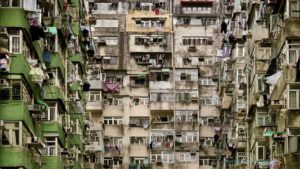
Shenzhen River dividing up Hong Kong SAR (on the left) and Shenzhen SEZ (on the right)
請看附圖,中間是分隔香港特別行政區和深圳經濟特區的深圳河, 你認為那邊是香港呢? 如果你選左邊,你是正確了。香港政府最近宣布一手私人住宅供應的進度,2016年首兩季度錄得16,200個私人住宅單位正在興建中,數字已經超越去年的總和 (即14,200個單位), 成績實在籍得鼓舞; 但官方並沒有提供未來數年的落成量和相應的需求數字,筆者就現時市況和政府以往提供的數字作出一些推測和提問, 好讓大家能作出最理性的分析和答案:[read more=”Click here to Read More” less=”Read Less”]
在沒有大型發展項目 (例如: 馬鞍山和將軍澳) 的支持下 , 新發展區不斷遇到阻力,加上開發密度上的爭議,持續供應的動力受到質疑;
現時本地建築工人供應緊張, 私人發展項目和大型基建同時爭奪有限的建築工人,不但推高建築成本,亦會拖慢建築進度; 筆者認為情況要待2020年後才可得到舒緩;
16,200個正在興建中的私人住宅單位相信會在2020左右竣工; 筆者以4至5年的建築進度推算, 2016 至2019年間的落成量亦是每年約16,000個新單位;
末來每年16,000個新單位雖然已經較2008/09年的供應翻了一翻, 但相對30年的長期平均量 (即每年24,000個單位), 仍然偏低三份之一, 明顯是一個大落後。
在需求方面,單是新婚夫婦, 每年已經超過50,000對,這個並未計入在過去數年受各種因素滯後置業計劃的準買家, 因此, 供求失衡的程度, 不言而喻。 [/read]


